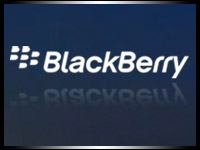
After releasing its BlackBerry Messenger chat app for Android and iOS devices to considerable fanfare last fall, BlackBerry on Thursday announced that it had expanded the app’s functionality on those platforms with two key features.
Previously available only to users of BlackBerry’s own mobile platform, BBM Voice and BBM Channels are now part of the company’s offerings for Android and iPhone users as well, giving those customers the ability to make free voice calls to BBM contacts over a WiFi or data connection, as well as chat with other BBM users about topics of mutual interest.
“Today’s announcement gives Android and iPhone customers two great ways to connect with friends, family and colleagues, to build out communities around shared interests, and to follow favorite people and brands,” said John Sims, BlackBerry’s president of Global Enterprise Solutions.
‘A Hybrid Between IM and Twitter’
BBM channels can be created by brands, businesses or individual users and are designed to help people share common interests in the broader BBM community.
“BBM Channels is like a hybrid between instant messaging, with one-to-one communication, and Twitter, in the sense that you can follow a celebrity or brand,” Jeff Orr, senior practice director with ABI Research, told TechNewsWorld.
A user could set up an Olympics-focused channel using the feature, for example, and the resulting conversation could include multimedia elements, as well as offer the potential for moderation by the channel owner, he pointed out.
Dropbox Integration
In addition to BBM Channels and the calling functionality enabled by BBM Voice, the new version of the BBM app for Android and iOS includes one-click file and photo sharing, location sharing, more than 100 new emoticons, and Dropbox integration.
The new location-sharing feature, for example, powered by Glympse, gives BBM users a way to share their real-time location with one or several BBM contacts for a specified amount of time. Designed for situations when someone might be running late or out with friends, for instance, the feature allows users to specify precisely how long they want to share their location.
Built-in support for Dropbox, meanwhile, aims to make it easy to send large files like presentations and videos. BBM users on Android and iOS can send a file from their personal cloud directly to a BBM contact. At the other end, they can save the file directly to their smartphone or add it to their Dropbox account.
No Mere Marketing Tool
“By making all the functionality available across operating systems, this really shows that BBM is a messaging platform rather than just a marketing tool or gimmick the company is using to get more device sales,” Orr said.
Moreover, “if the initial launch of iOS and Android support is any indication, it should be very well received by both consumers and business users — probably the Voice feature more than Channels,” he predicted.
“BlackBerry has shown that it’s very responsive to the needs of the market — it continues to update and innovate on the platform,” Orr added. “This all bodes well.”
‘Where’s the Money?’
Indeed, the addition of the new features is a natural progression, Chris Silva, a research director with Gartner, told TechNewsWorld.
“It seems like a continuation of their strategy to bring BlackBerry features to other platforms and use BBM as an enticement,” Silva explained. “They’ve continued to play competitively and get on par with competitors.”
There is “probably a bit of uncertainty on what happens with the product from here, given that the person in charge recently left,” he noted, referring to the recent departure of Andrew Bocking, the executive vice president in charge of BBM.
Meanwhile, “the bigger question I have is, how does this play out as a revenue stream?” Silva said. In other words, “where’s the money?”





















































